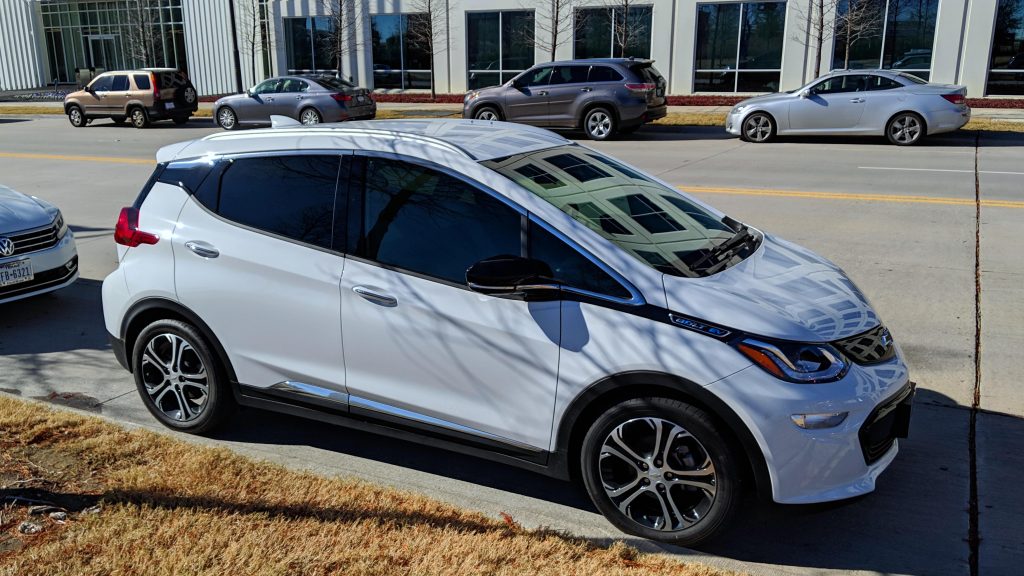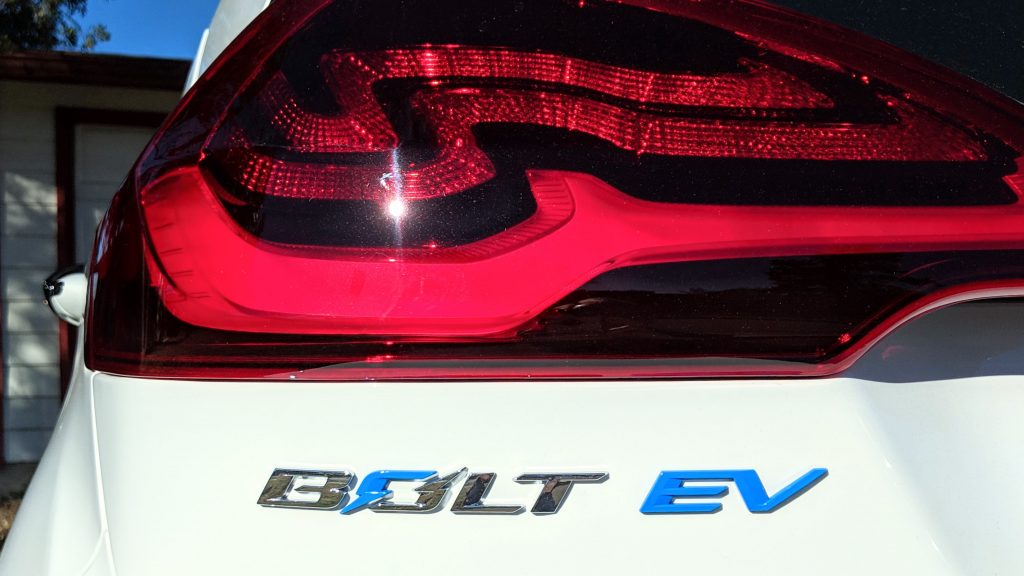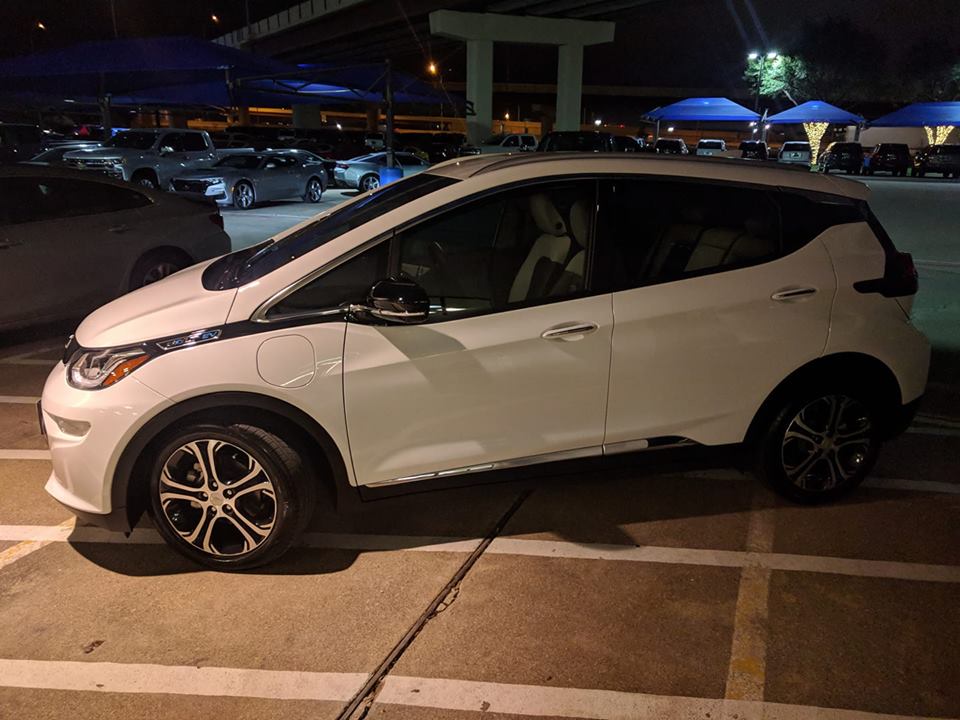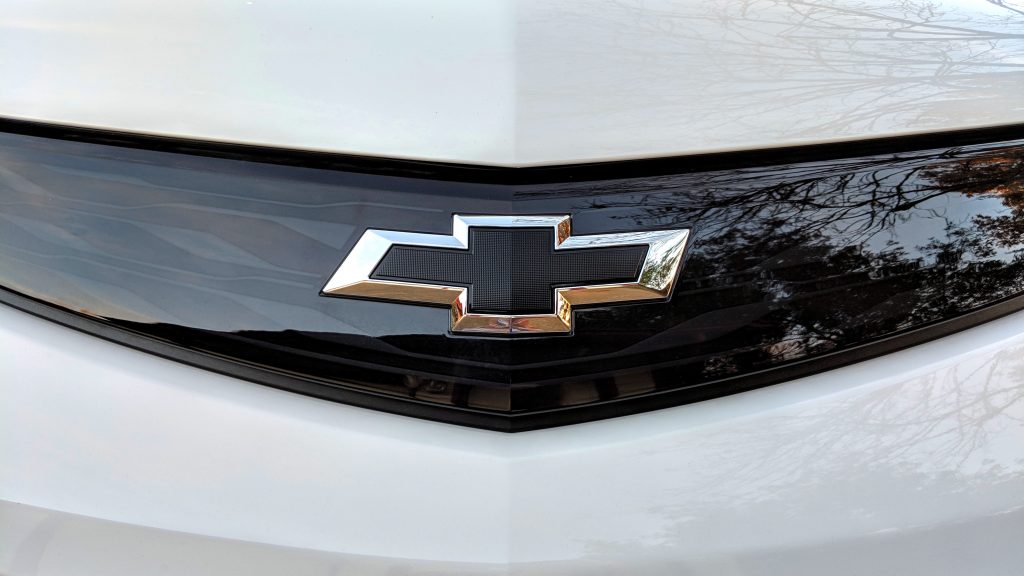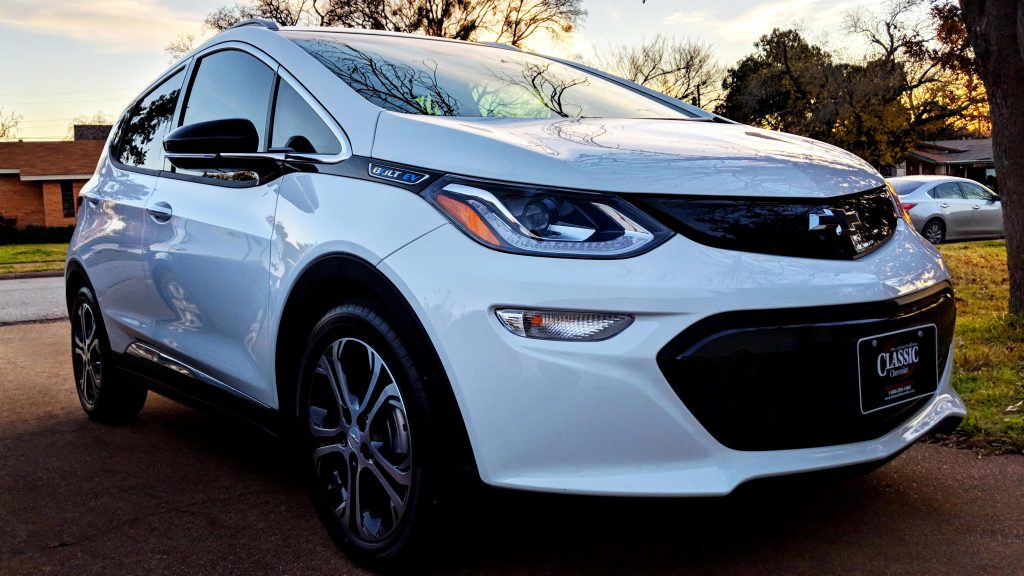
I’ve been driving an electric car since December of 2018. I’ve driven more than 3000 miles in about four months and it’s time for a proper review of the car. If you’re curious why I chose an electric car and how I selected the Chevy Bolt EV, check out Going Electric Part 1. If you’re curious about the trials and tribulations of ordering an electric car from a traditional car manufacturer like GM, read Going Electric Part 2. If you just want to know how I like my Bolt after 3000 miles of driving, read on.
I’ll start by saying that I love the Bolt and would happily buy it again even though the Tesla Model 3 is now close to being in the same price range. I don’t miss weekly trips to the gas station. The Bolt is quiet, non-polluting, and fun to drive. I’m not someone who usually names my cars but I couldn’t resist naming this one Jolteon, after the powerful little electric Pokémon. The Bolt shares the generational difference that makes all electric cars feel futuristic compared to older gas cars. It’s hard to describe that difference to someone who hasn’t tried driving an electric car but if you imagine the change from driving from a wooden, horse-drawn wagon to a Ferrari, you’ll have an idea. Top Gear’s James May was a skeptic of electric cars but, after driving a Tesla, he’s a fan and was quoted as saying they seem to be “propelled by magic”. Joe Rogan, a podcaster and well-known electric car skeptic was also converted after test driving a Tesla. He described the feeling as the car “punching its way out of a wormhole using alien technology”.
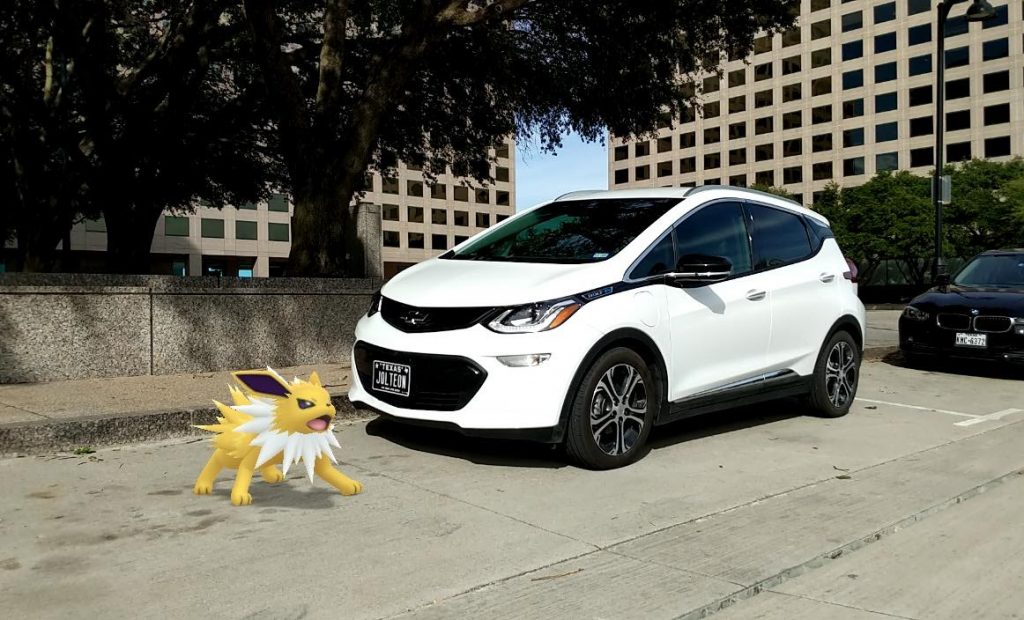
I’ve read that cars are not very interesting or important to the current generation but if you grew up in my generation, getting your driver’s license and first car was one of the most important events in your life, signaling you’d reached adulthood. And you probably loved that first car (no matter how much of a beat up, second-hand wreck it really was). You loved driving it, tinkering with it, even washing and waxing it. You might look for any excuse to go for a drive just for the sheer joy of it. Getting an electric car, whether it’s a Chevy Bolt EV, BWM i3, or the ubiquitous Tesla, is a bit like reliving that teenage first-car experience.
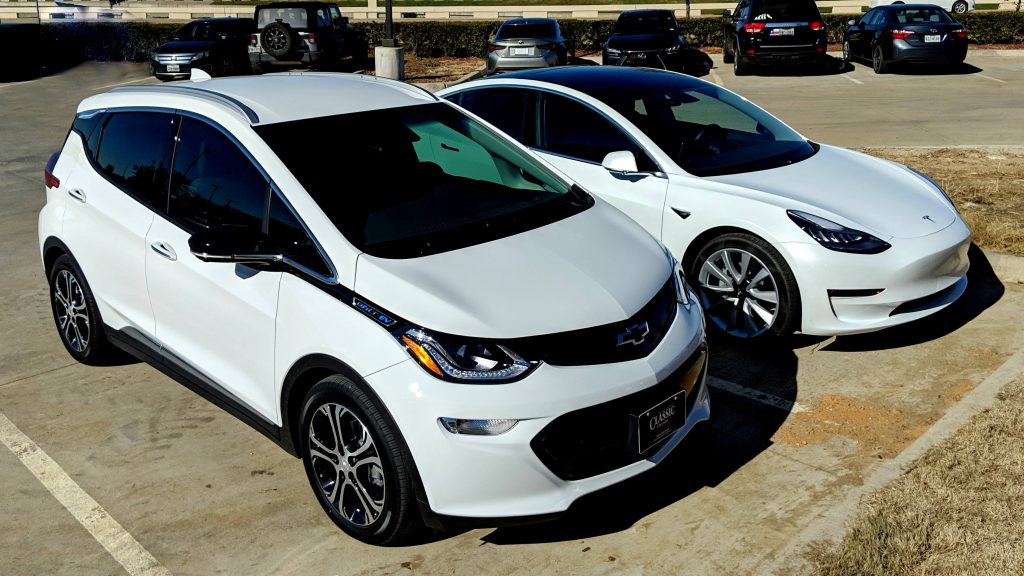
I’m not a professional car reviewer and can’t hope to cover all the usual car review points in a way more interesting than the dozens of well-done reviews already out there. So, instead, I thought I’d do two things. First, I’ll give you an idea of my daily driving routine. And, second, I’ll address some of the common questions I get asked by people when they find out I drive an electric car. If you have a question I haven’t answered, feel free to leave it in a comment and maybe I can give you an answer.
My daily commute on weekdays is minimal. I live a few miles from work and usually drive a few more miles each day for a meal or an errand. Weekends are busier and can involve far more miles than weekdays but seldom more than 200 unless we’re taking a trip down to Austin or Houston. I typically charge my Bolt twice a week; once on Sunday night to get me through the work week and once on Friday night to get me through the weekend. Most weeks, I could easily get by on one charge if I wanted but I like having the extra range in case I need it. I also top off the battery occasionally when I’m at one of the growing number of locations that offer free EV charging. Most Whole Foods locations, for example, have a free Level 2 charger, so you can pick up another 20 miles or so of range while you shop or have a coffee. Our local Half Price Books also has a free charger and we love to browse in the bookstore. Quite a few franchise restaurants are in the process of deploying similar free or low cost charging stations.
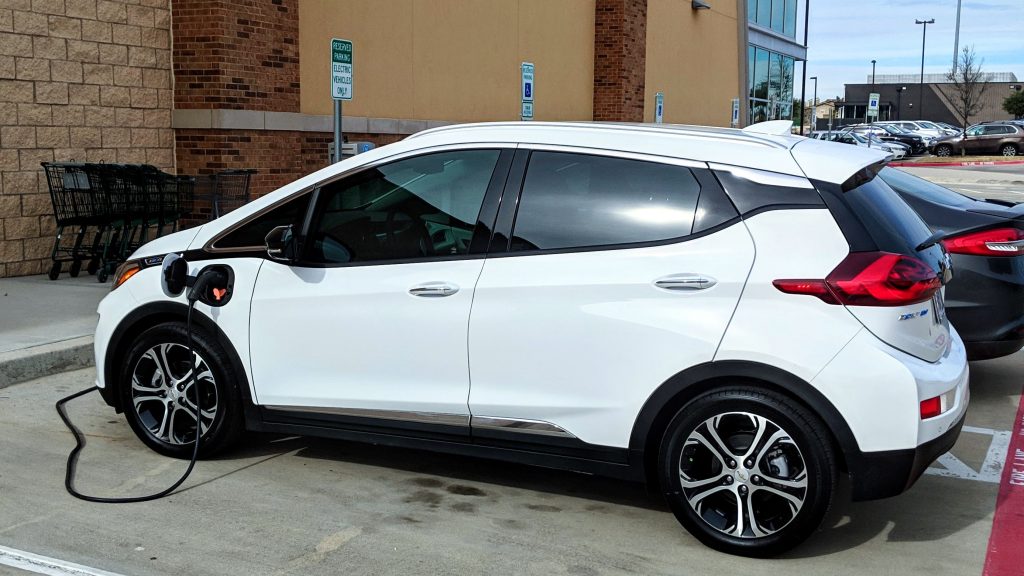
The Chevy Bolt has the typical GM shifter used in most of their new models but the L and D have slightly different meanings than in an ICE car since EVs don’t have the concept of Low vs Drive gears. I think of them as “Logical” and “Dumb” mode. If you put the shifter in D, the computer turns off regenerative braking, except when you’re actually stepping on the brake pedal. So it emulates the driving characteristics of a gas powered car with an automatic transmission – it coasts when you take your foot off the “gas” pedal at speed, slows down when you step on the brake pedal, and rolls forward at about 1mph on its own if you take your foot off the brake after stopping. It would be dumb to use D most of the time because it’s much less efficient, with a couple of exceptions. D can be handy if you’re letting someone drive your vehicle and they have no experience driving an EV. Putting it in D will make them feel right at home. The other time D can be useful is if you’re driving on an icy road and actually need to coast with no regen (you could also shift into neutral but D is probably easier).
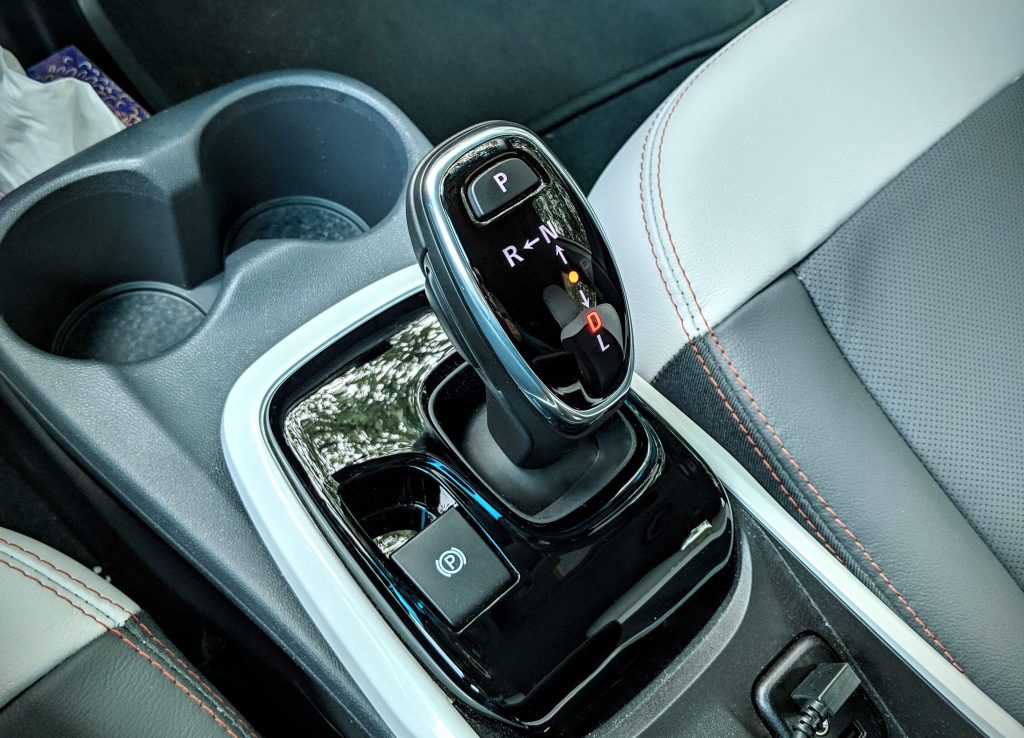
The logical thing to do, most of the time, is to put the shifter into L for everyday driving. This is often referred to as “one pedal driving” mode and lets the “gas” pedal combine acceleration and deceleration. Electric cars use regenerative braking instead of friction braking. In a gas car, you use friction brakes to convert excess speed into waste heat. In an electric car, you use regeneration to convert excess speed into electricity that’s stored in the battery. With one pedal controlling both acceleration and deceleration, you have to pick up the knack of knowing where the zero-point is – the point where the pedal movement passes from acceleration to maintaining constant speed to decelerating. If you’ve ever driven a gas car with a standard transmission, this is exactly like learning the zero-point on the clutch – the point in the pedal motion where the clutch engages. I found one pedal driving very intuitive within a few minutes, I think because it reuses my old standard transmission skills. Even in L mode, the traditional disc brakes are still there if you need them for an emergency stop or station keeping at a stop light. The added bonus of driving in L mode is that your brake pads will likely last so long that they’ll never need replacement.
The car can accelerate like crazy of course, as all electric vehicles can. The Bolt doesn’t have anything approaching Tesla’s “ludicrous” mode but it does have a “sport” mode that changes the acceleration curve for quicker starts. I almost never use sport mode as it’s not really needed and just makes it harder to avoid spinning the wheels when the light turns green.
Another thing most EVs have in common is that they are very heavy due to the batteries. This is a problem for decelerating because there’s a lot more inertia than an ICE vehicle. Trying to stop in a very short distance feels similar to an emergency stop in a loaded down pickup truck. But the weight actually seems to improve some handling characteristics. Going around curves feels pretty good in the Bolt. The electric power steering feels much better to me than the usual steering slop found in most American-made cars. There’s a bit of torque-steer at high acceleration, which can be a surprise the first time you experience it, but it isn’t too bad and you can keep it under control easily as long you know it’s coming.
Like other electric vehicles, the Bolt has more space in the cabin and the trunk than you’d expect. Most people who get into the back seat of my Bolt are surprised at the leg room. And there have been a few times I folded the rear seats down and used the resulting cargo space to load big stuff in through hatchback.
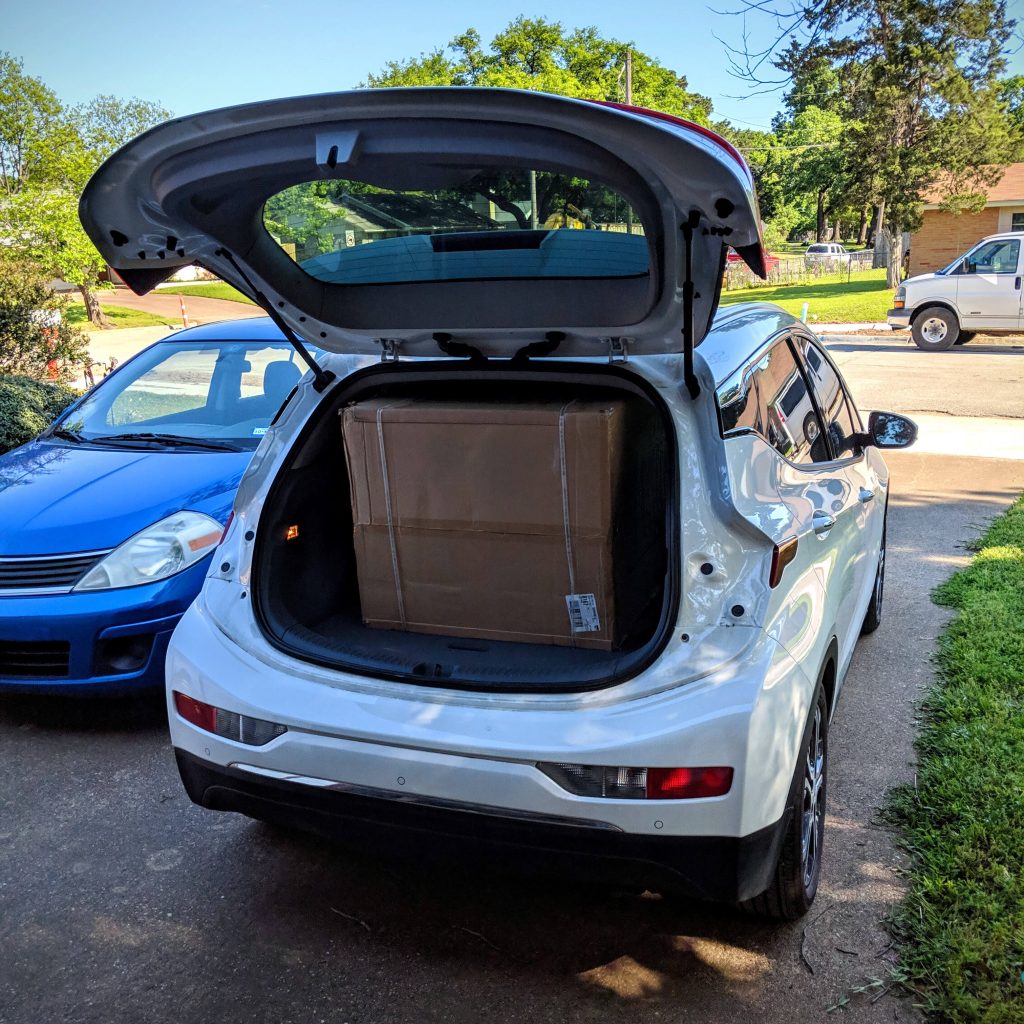
And speaking of seats… I’ve read persistent complaints that the Bolt has “uncomfortable” seats. All I can say is that the seats feel great to me and are as comfortable as the seats in previous cars I’ve owned like the Acura RSX, Acura Integra, and various Hondas. Maybe the seats don’t work for drivers who are extra tall, extra wide, or extra large? Maybe some people are just pickier about their seats than I am? Maybe it was just the first generation 2017 Bolts with this problem? All I can say is that the seats in my 2019 Bolt Premier are quite comfortable. I recommend you do a test drive to try them out for yourself before buying.
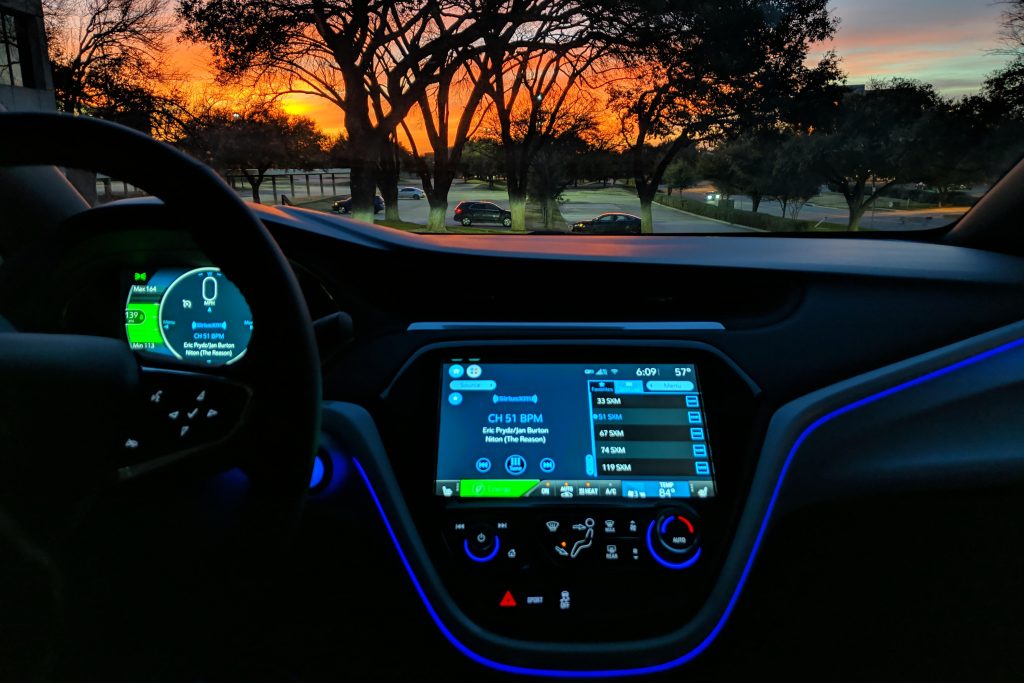
So that’s about it for the review. I love the car and think you ought to test drive a Bolt today. GM is finally beginning to catch up with demand, which means you’ve got a pretty good chance of finding Bolts in stock at the dealers. Last I checked, Classic Chevrolet in Grapevine has around 20 in stock. What follows are my attempts to answer some of the questions I’ve been asked since I got there car.
- Don’t you get “range anxiety” with an electric car? – “Range anxiety” is the media’s name for the fear that you’ll run out power while driving. It’s basically the same as the fear you’ll run out of gas and get stuck in a gas-powered car. The short answer is no, I’ve never experienced range anxiety. Prior to my Bolt EV, I drove a 2009 Pontiac G6. With a full tank of gas, I could drive about 300 miles. With my Bolt EV and a full charge, I can drive 238 miles according to the EPA rating, and typically 285 miles or more in the real world (“hyper-milers” have driven Bolt EVs well over 400 miles on a charge but that’s driving at low speeds with no radio, no AC, and other hardships I’m not willing to endure). My daily commute is seldom over 100 miles even on my busiest day running errands all over the Dallas / Fort Worth area. It’s very unlikely that I would ever run out of gas or power in either car; there’s just no difference. If anything, I have less range anxiety with the Bolt because I don’t have to worry about trips to the gas station. I can leave the house every morning with a full battery if I want. On very rare occasions, I travel as far as Austin or Houston and in those cases I may need to “fill up” along the way, which means stopping at a fast-charger for a half-hour while I eat lunch. Again, for me, this isn’t a problem or source of anxiety. If my driving habits were different and I had a commute that was on the edge of my range, like 250 miles, I could see how this might be an issue and I’d recommend getting a car with a greater daily range.
- What are the maintenance costs like? An electric car has no gas engine, no oil pump or oil, no spark plugs, no transmission or transmission fluid. There’s no camshaft, no head gaskets, no catalytic converter, no exhaust system, no alternator, no starter, no fuel pump, no timing belt. Think about all the stuff that used to break on your gas car. Most of those components don’t even exist on an electric car. I’ve read that where typical ICE vehicles have over 10,000 moving parts, the average EV only has about 20 moving parts. There are still traditional disc brakes, but they’re really just for backup and you’ll almost never use them due to regenerative braking, so you may never have to replace the brake pads. There are still tires that need rotation and replacement. And you’ll need to top off the wiper fluid and replace wiper blades eventually. There’s also a battery coolant system that will someday need to be flushed and refilled if you keep the car long enough. The Bolt EV’s official maintenance schedule for the first 100,000 miles consists of nothing but tire rotation and changing the cabin air filter. At 150,000 miles you’ll have the first check on the battery coolant and a flush or top off as needed.
- But what about the battery, isn’t that super expensive to replace? Yes, it is but it’s covered for 8 years or 100,000 miles. It’s monitored remotely by GM and in the rare case that it suffers unexpected degradation, you’ll likely just get an email asking you to bring it in for a free replacement. That’s very rare but has happened to a few Bolt owners. No one really knows what the full lifespan of auto battery packs will be but there are lots of examples of Bolt EVs and Teslas well into the multi-hundred-thousand mile range with no more than 10% degradation in range. The older Chevy Volts, which have similar battery technology, have reached over 400,000 miles driven with no significant battery degradation. I’d compare it to having to replace the engine in a gasoline car; sure it’s expensive but I’ve never had to do that even once with all the gasoline cars I’ve owned during my lifetime, so I’m not really worried about it.
- I’ve read that it’s actually worse for the environment to drive an electric car, is that true? No it’s not true. Even considering the ecological impact of building the car AND of the power generation used over the lifetime of the car (electricity vs oil), AND even if you charge it using electricity generated from coal, the most polluting energy source available, an electric car still produces only half the pollution of a gas car over their respective lifetimes. If you’re in a state with the freedom to choose your electric provider, you likely have one that uses 100% renewable sources like wind or solar and, in that case, you’re doing way better than just half the pollution of a gas car. Plus that difference is increasing fast as the energy density of batteries improves and more of our power generation infrastructure switches to non-polluting sources. If you look closely at the origin of those stories about electric cars harming the environment, you’ll find that many are funded by fossil-fuel proponents with political and economic motivation for pulling the wool over your eyes. It’s a bit like all the reports the tobacco industry used to fund claiming smoking was healthy for you. So consider the source and don’t be fooled by that sort of propaganda! Other studies are well-meaning but flawed. The most common flaw is that they will take into account the costs and CO2 of producing the electricity used by an electric car over its lifetime but forget to do the same for the gas car (i.e. take into account the cost and CO2 of prospecting, drilling, extracting, shipping, refining, and then burning all that oil).
- The Bolt EV doesn’t have all the self-driving technology like the Teslas does it? No, it doesn’t but it does have similar underlying sensor technology. It has follow distance sensing with auto-braking, closing distance alarm, lane departure detection and auto-correction, pedestrian sensing with auto-braking, 360 degree imaging in the form of a “drone view” of the car as well as traditional front and rear camera views for parking. It has a video-based rear view mirror, allowing the rear view mirror to work even when your back seat is full of stuff and blocking the view. And it has a lot of other automation like automatically applying the parking brake on inclines and automatically disengaging it if you forget. But it doesn’t do autonomous driving. It’s worth noting that the Teslas in the Bolt EV’s price range can not do autonomous driving either. If you get a Tesla Model 3, adding autopilot for autonomous driving ups the price by $5000 or more. Without autopilot, the Bolt EV actually has more and better automation than the Tesla Model 3 for the same price. But if you want a fully autonomous driving mode, you want the Tesla, not the Bolt.
- Doesn’t charging take forever compared to a fill-up at the gas station? That’s the wrong comparison. With a gas car, you have to stand there and monitor the fill up. A better analogy would be your phone. Doesn’t it take you forever to charge your phone, as you stand over the phone waiting for it to finish charging from 0% to 100%? Of course not, that’s silly because you don’t do that. You probably just plug the phone in when you’re not using it, like during the night when you’re sleeping or at your desk while you’re working. Same thing with an electric car. I get home in the evening and it takes just a few seconds to plug it in and that’s it. When I leave in the morning it’s fully charged and ready to go. You can leave every morning with a full “tank” and it doesn’t take more than a few seconds of your time. The one exception is if you’re traveling a long distance and need to stop midway to charge. In this case, it actually is more like filling a gas tank because you’re stuck until it’s ready to go again. It takes about 30 minutes at a fast charger and you’ll add around 90 miles of range. If you plan ahead and time it to coincide with lunch or a rest stop it’s not a big deal. This issue will diminish over time as battery energy density improves. For me it’s no problem now but if it’s a problem for you, wait another year or two for the next generation of EVs that will go 400 miles, 600 miles, or even futher on a charge
- Does the car include GPS navigation? No, it includes something better. It interfaces with the GPS navigation on your smartphone via Android Auto (or whatever the equivalent Apple thing is for iPhone users). So you can continue using Google Maps without having to learn a sub-standard auto navigation app that probably doesn’t have up-to-date map data anyway. I wish all cars did this. Android Auto basically puts your phone’s display on the Bolt’s big 10“ touch screen and uses the Bolt’s sound system too. So you can say “Ok, Google, navigate to the nearest Starbucks” or you can use the touch screen to drag the maps around and find what you want. Just make sure you have a good USB cable, Android Auto uses a lot of bandwidth and some cables aren’t up to it.
- Why a boring color like white? Cars only come in a limited number of colors these days. I’ve owned two blue cars, three red ones, and a silver one. I’ve always wanted a yellow one but the car I want to buy has never been available in yellow the year I bought it. The Bolt came close with that tennis ball yellow/green “shock” color but it wasn’t close enough to true yellow to suit me. Eliminating all those colors left black and white. Black cars are intolerably hot in the Texas summer. So it was white by default. On the upside, statistically, white cars have the highest resale value and the lowest accident rate of any color.
- Is there a spare tire? No, like a growing number of new cars, the Bolt EV includes self-healing / run-flat tires only. There is no spare of any kind. I built my own kit with a donut spare from a Chevy Cruze and a jack from a Chevy Blazer. Works great for me and I like having the backup even though I haven’t needed it so far. If you go the DIY route, just be aware that you’ll need a heavy duty jack from something like a Blazer or some other Chevy truck that can lift the weight of an EV (check the Bolt EV forums to find lists of compatible jacks).
- Anything unexpected or surprising about owning a Bolt?
- The silence makes ambient sounds like rain and nearby birds more noticeable. It also means people in the parking lot can’t hear you and tend walk right in front of the car, so you have to pay extra attention to pedestrians.
- Even though you know the torque and acceleration are amazing compared to ICE vehicles because it’s mentioned in every review, it still takes you by surprise.
- Within weeks, the complete absence of emissions makes you strangely aware of the exhaust smell from ICE cars.
- Between the huge windshield and all the video, the visibility is amazing, maybe the best of any car I’ve owned since my 1984 Honda CRX.
- Free public chargers. I didn’t realize there were free chargers available anywhere when I bought it. Imagine getting a free gallon of gas every time you go the grocery store, the book store, or the coffee shop!
- Unlike a Tesla, the Bolt isn’t instantly recognizable as an electric vehicle. Many people mistake the Bolt for a typical compact hatchback. But it’s distinctive and rare enough you’ll still get the occasional “what kind of car is that” questions.
